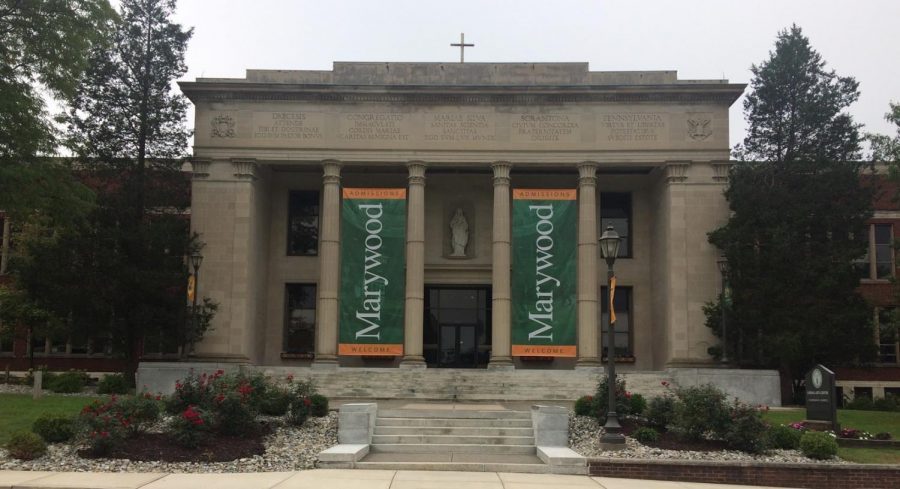Marywood’s oldest building just got a little cooler
Photo credit/ Briana Ryan
The updates to the first floor classrooms come nearly 10 years after the classrooms on the second floor got air conditioning during previous renovations.
September 15, 2020
A new cooling system was installed in the Liberal Arts Center (LAC), Marywood University’s oldest building, bringing air conditioning to first floor classrooms this summer.
The project was part of a campus-wide decentralization project that involved upgrades to heating and cooling systems in several campus buildings.
According to Wendy Yankelitis, director of Buildings and Grounds, the total cost of the decentralization project was approximately $12 million.
According to Yankelitis, who oversaw the air conditioning project, the timing was right for the upgrade to the first floor of LAC “from a cost-effective standpoint.” That’s because the project coincided with the decentralization project, which required new heating lines to be run through the first-floor classrooms.
Yankelitis said most of the work was done above the ceiling, so the integrity of the building remained intact. The timing also coincided with the campus closure due to COVID-19, which meant that there was no disruption to classes while the work was being completed.
The LAC was constructed in 1922 and dedicated two years later in 1924. The murals decorating the Rotunda were added in 1937. It has taken nearly 100 years for the entire building to include a cooling system.
Currently, the LAC is home to classrooms and offices for departments including Admissions and Financial Aid. In the past, the building has housed a myriad of spaces including an art gallery, a coffee shop and various laboratories.
The updates to the first floor classrooms come nearly 10 years after the classrooms on the second floor got air conditioning during previous renovations.
To complete the project, Marywood entered into an “energy-saving contract” with Honeywell. The contract, which Yankelitis estimates has a 10-year payback period, guarantees at least a $500,000 energy cost savings each year. The energy savings realized makes the air conditioning project essentially self-funded, she said.
Dr. Erin Sadlack, professor of English, has taught in both first and second floor classrooms during her 16 years of teaching. Sadlack said she has witnessed firsthand what it is like in those classrooms during the warmer months of the year.
“You could see the students wilting at their desks and struggling to learn,” said Sadlack. “I am really excited about what that [the addition of air conditioning] is going to mean because it’s a more comfortable learning environment.”
Sadlack said that having an environment where students can be engaged intellectually and learn without the added pressure of trying to focus in the heat will be wonderful.
Paige Bell, a senior speech-language pathology major, said the heat was almost always a point brought up by a student or professor during classes.
“It wasn’t too hard to focus, but it was more distracting than being in a classroom that wasn’t hot,” said Bell. “It [the heat] was definitely uncomfortable and made class less enjoyable.”
Contact the writer: [email protected]





